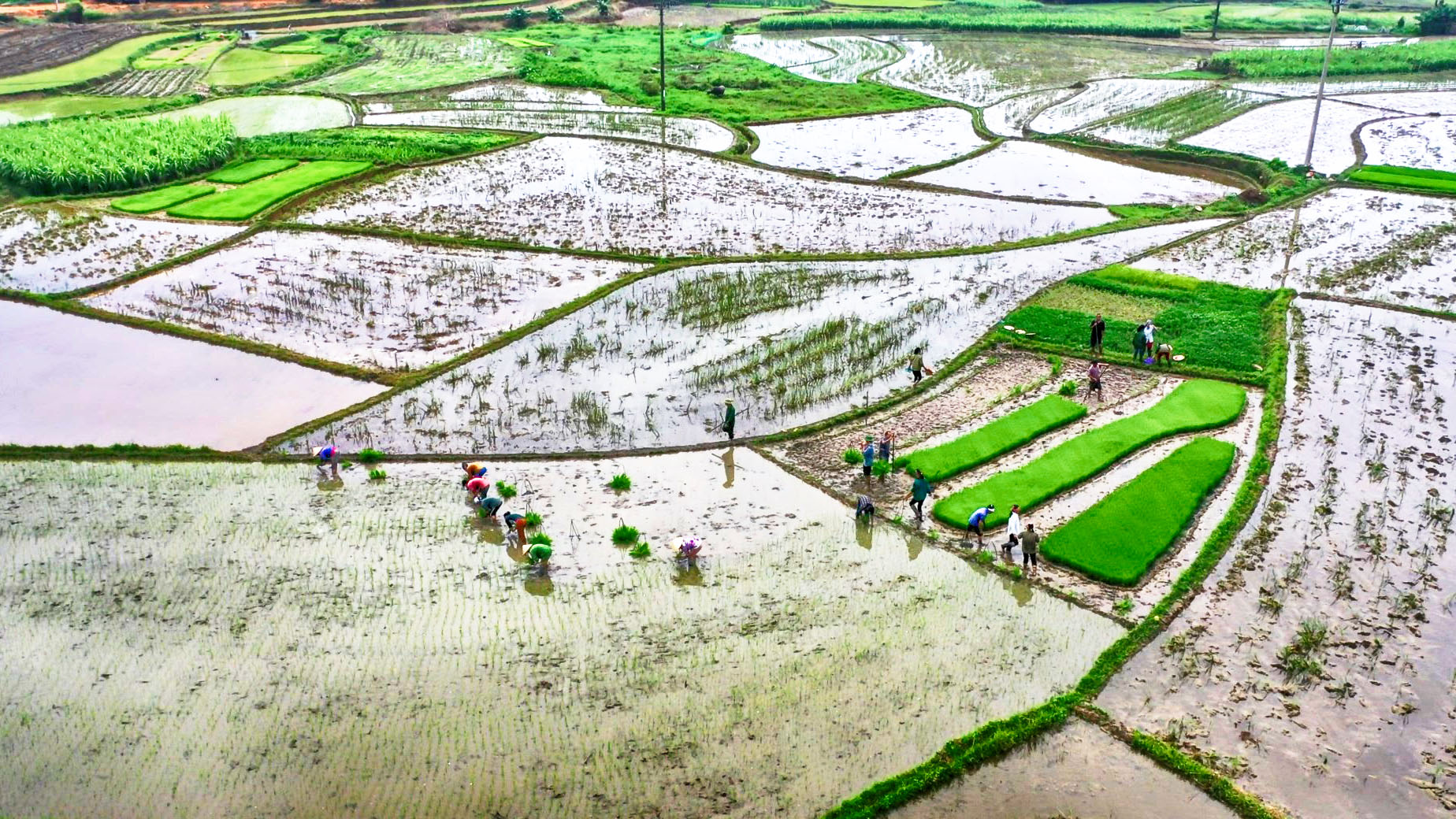
According to the Report, the total discharge of hydropower reservoirs in both phases is 3.62 billion m3 (phase 1 is 1.41 billion m3, phase 2 is 2.21 billion m3), about 1.14 billion m3 lower compared with the total amount of water discharge expected by Vietnam Electricity. Particularly in the second phase, the hydropower plants have operated at their maximum generating capacity, so the flow of the Red River system is maintained at the highest possible level, the average water level in the whole phase at Hanoi Hydrological Station reached 1.61m, creating better conditions for irrigation works to operate and collect water.
The water level on the Red River system during the water-intake phases is basically consistent with the calculated scenario, creating conditions for irrigation works that have been repaired, upgraded and lowered the water intake level, field pump stations and water intake sluices in the intertidal zone have good operating conditions. However, because the lowering of the water level on the river system continues to progress rapidly, leading to projects that have not been invested in upgrading such as Trung Ha, Phu Sa pumping stations (Hanoi City), Cam Dinh, Lien Mac sluices (Hanoi City), Long Tuu sluice (Bac Ninh province) are not qualified to operate the water intake (this situation has often happened since the last few years).
To get the above positive results, EVN and its units have been very proactive in preparing for implementation. Immediately after receiving a notice from the General Department of Water Resources at the end of November 2022 about the schedule to collect water for the cultivation of the 2022-2023 Winter-Spring crop in the Northern Midlands and Delta region, EVN has developed an operation and discharge water plan from the northern hydropower reservoirs (Hoa Binh, Thac Ba, Tuyen Quang) and a plan to ensure electricity for pumping water for planting.

EVN has directed the National Load Dispatch Center to regulate the water of hydropower reservoirs and operate the system reasonably to meet the water demand and ensure the power supply plan, and at the same time regulate the reservoirs to maintain the water level in Hanoi at a reasonable level to save water, ensure the highest efficiency of the two concentrated water-intake phases and ensure the electricity supply in the 2023 dry season for the national power system. To avoid water waste and power-saving, EVN and related hydropower companies have actively suggested and coordinated with the Departments of Agriculture and Rural Development of the provinces/cities to immediately direct the localities to proactively early pump and store water in ponds, lagoons, low-lying areas and canals from available water sources in rivers and streams. The units of the Power sector also suggested that the irrigation-exploiting companies closely monitor the water source during the concentrated water-discharge time to pump water into the irrigation system and effectively use the water from the reservoirs, ensuring adequate water supply for irrigation and watering of rice.
Compared to recent years, the total discharge is 0.62 billion m3 lower than that in 2022, 1.52 billion m3 lower than that in 2021, 0.94 billion m3 higher than that in 2020 (the year with heavy rain on Lunar New Year), 1.06 billion m3 lower than that in 2019.
CONTACT INFO:
Communication Department - Vietnam Electricity Corporation;
Address: No.11 Cua Bac Street, Truc Bach Ward, Ba Dinh District - Hanoi;
Email: bantt@evn.com.vn ; Tel: 024.66946405/66946413;
Website: www.evn.com.vn, www.tietkiemnangluong.vn
Fanpage: www.facebook.com/evndienlucvietnam
Youtube: https://www.youtube.com/c/ĐIỆNLỰCVIỆTNAM_EVNnews
Tiktok channel: https://www.tiktok.com/@dienlucvn
evn.com.vn
Share